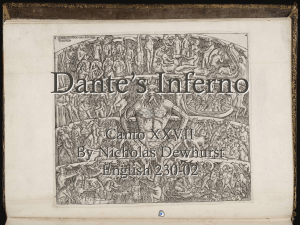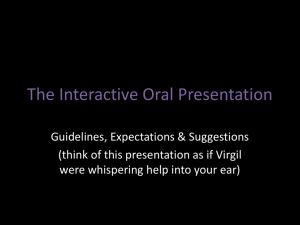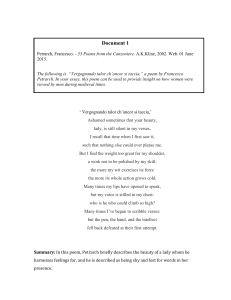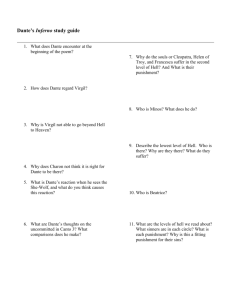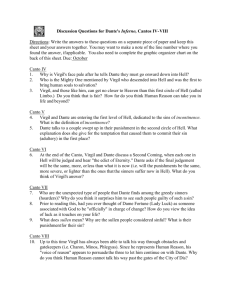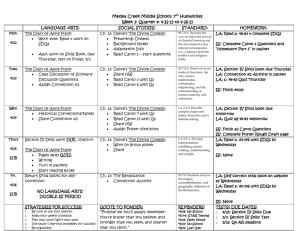Inferno Study Guide
advertisement
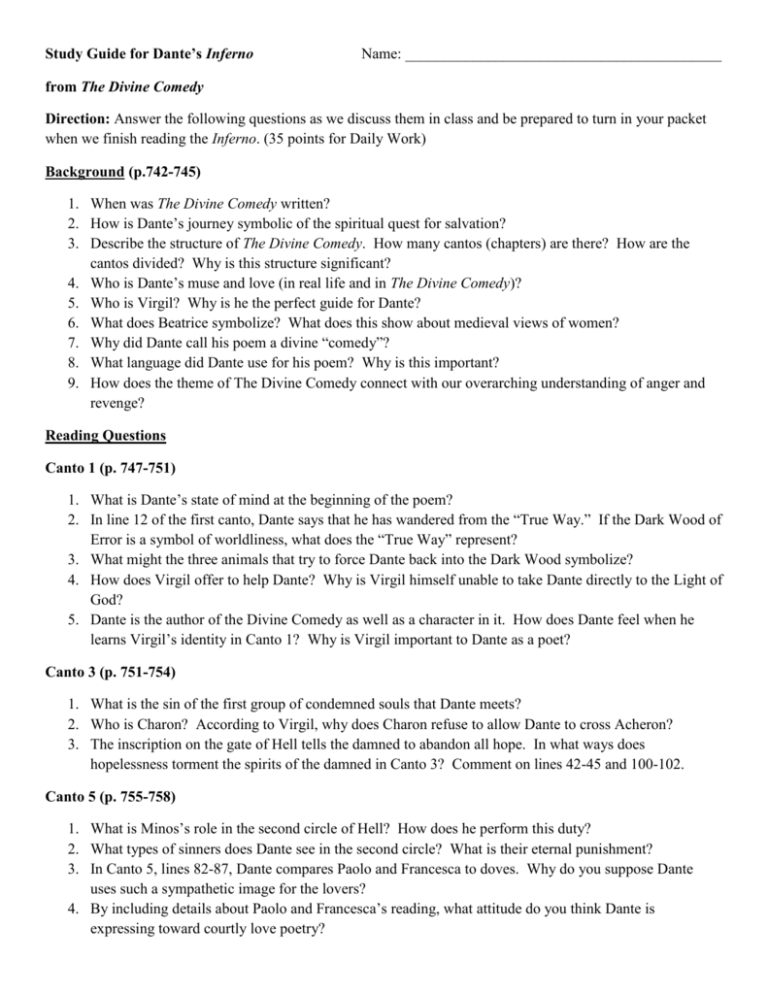
Study Guide for Dante’s Inferno Name: __________________________________________ from The Divine Comedy Direction: Answer the following questions as we discuss them in class and be prepared to turn in your packet when we finish reading the Inferno. (35 points for Daily Work) Background (p.742-745) 1. When was The Divine Comedy written? 2. How is Dante’s journey symbolic of the spiritual quest for salvation? 3. Describe the structure of The Divine Comedy. How many cantos (chapters) are there? How are the cantos divided? Why is this structure significant? 4. Who is Dante’s muse and love (in real life and in The Divine Comedy)? 5. Who is Virgil? Why is he the perfect guide for Dante? 6. What does Beatrice symbolize? What does this show about medieval views of women? 7. Why did Dante call his poem a divine “comedy”? 8. What language did Dante use for his poem? Why is this important? 9. How does the theme of The Divine Comedy connect with our overarching understanding of anger and revenge? Reading Questions Canto 1 (p. 747-751) 1. What is Dante’s state of mind at the beginning of the poem? 2. In line 12 of the first canto, Dante says that he has wandered from the “True Way.” If the Dark Wood of Error is a symbol of worldliness, what does the “True Way” represent? 3. What might the three animals that try to force Dante back into the Dark Wood symbolize? 4. How does Virgil offer to help Dante? Why is Virgil himself unable to take Dante directly to the Light of God? 5. Dante is the author of the Divine Comedy as well as a character in it. How does Dante feel when he learns Virgil’s identity in Canto 1? Why is Virgil important to Dante as a poet? Canto 3 (p. 751-754) 1. What is the sin of the first group of condemned souls that Dante meets? 2. Who is Charon? According to Virgil, why does Charon refuse to allow Dante to cross Acheron? 3. The inscription on the gate of Hell tells the damned to abandon all hope. In what ways does hopelessness torment the spirits of the damned in Canto 3? Comment on lines 42-45 and 100-102. Canto 5 (p. 755-758) 1. What is Minos’s role in the second circle of Hell? How does he perform this duty? 2. What types of sinners does Dante see in the second circle? What is their eternal punishment? 3. In Canto 5, lines 82-87, Dante compares Paolo and Francesca to doves. Why do you suppose Dante uses such a sympathetic image for the lovers? 4. By including details about Paolo and Francesca’s reading, what attitude do you think Dante is expressing toward courtly love poetry? Canto 33 (p. 761-764) 1. According to Canto 33, what souls are punished in the ninth circle? What sins have they committed? 2. How does Ugolino’s grim story make Ugolino himself feel? What does he then do to express his feelings? 3. Describe Ugolinio’s evil dream (Canto 33, lines 28-36) and explain how it parts “the veil of the future” (line 27) – that is, forecasts coming events. 4. Why does Dante not keep his promise to Friar Alberigo? Canto 34 (p. 765-769) 1. According to Canto 34, what sinners are punished in the lowest, last circle? How are they punished? 2. Why does Dante regard Judas, Brutus, and Cassius as the worst sinners of all? How does Judas’s sin differ from that of Brutus and Cassius? 3. According to Dante, what does Satan look like? What is Satan doing? 4. In what way could Satan’s three faces be explained as symbols?
